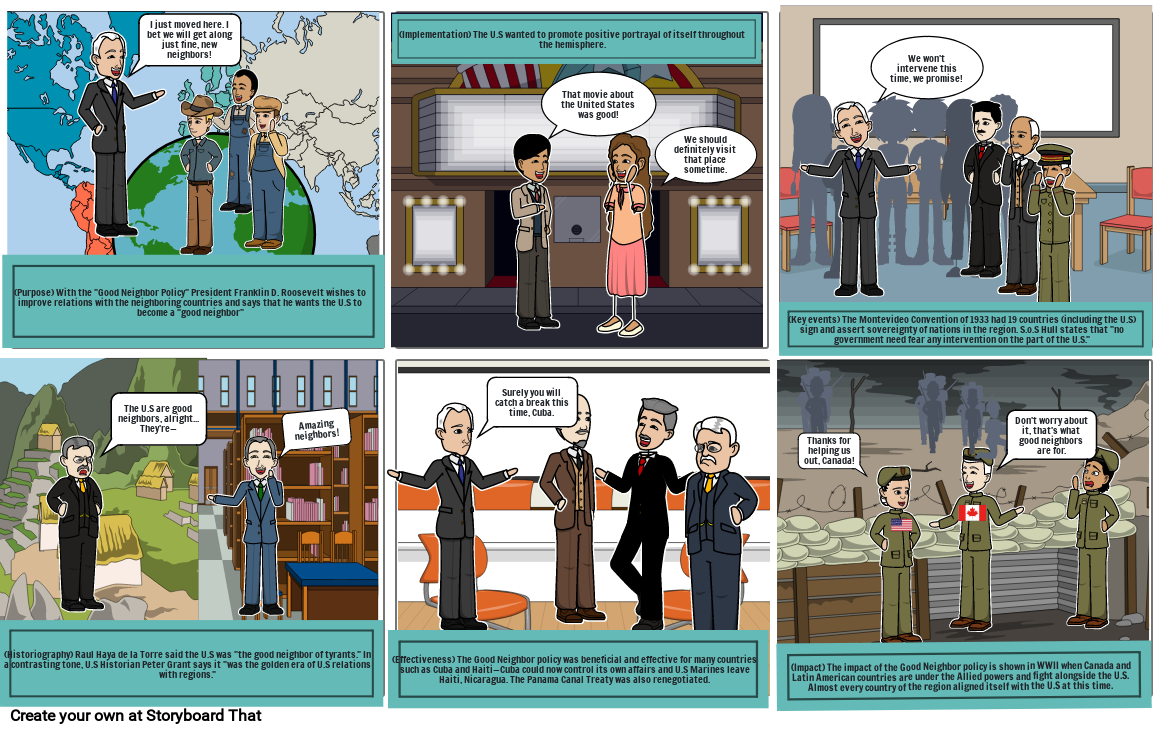Good Neighbor Policy

Storyboard Text
- (Purpose) With the "Good Neighbor Policy" President Franklin D. Roosevelt wishes to improve relations with the neighboring countries and says that he wants the U.S to become a "good neighbor"
- I just moved here. I bet we will get along just fine, new neighbors!
- (Implementation) The U.S wanted to promote positive portrayal of itself throughout the hemisphere.
- That movie about the United States was good!
- We should definitely visit that place sometime.
- (Key events) The Montevideo Convention of 1933 had 19 countries (including the U.S) sign and assert sovereignty of nations in the region. S.o.S Hull states that "no government need fear any intervention on the part of the U.S."
- We won't intervene this time, we promise!
- (Historiography) Raul Haya de la Torre said the U.S was "the good neighbor of tyrants." In a contrasting tone, U.S Historian Peter Grant says it "was the golden era of U.S relations with regions."
- The U.S are good neighbors, alright... They're—
- Amazing neighbors!
- (Effectiveness) The Good Neighbor policy was beneficial and effective for many countries such as Cuba and Haiti—Cuba could now control its own affairs and U.S Marines leave Haiti, Nicaragua. The Panama Canal Treaty was also renegotiated.
- Surely you will catch a break this time, Cuba.
- (Impact) The impact of the Good Neighbor policy is shown in WWII when Canada and Latin American countries are under the Allied powers and fight alongside the U.S. Almost every country of the region aligned itself with the U.S at this time.
- Thanks for helping us out, Canada!
- Don't worry about it, that's what good neighbors are for.
Over 30 Million Storyboards Created
No Downloads, No Credit Card, and No Login Needed to Try!
